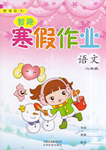题目内容
完形填空
Dad was not only my best friend, but my compass (指南针). While he was alive, he ________me with his actions and advice. He taught me one important ________ : “Believe in yourself.”
If there was one phrase my dad ________liked to hear, it was “I can’t.” He never got to finish high school and ________ two jobs to support his large family, ________ he never complained. Through education and years of hard work, my dad became an excellent journalist.
When I was in high school, I had a ________time with math. He tried to help me, but I ________ struggled. So my math teacher suggested I meet with him at 7:00 each morning before school for ________ help. I told Dad, “That’s ________! I’m tired! I can’t do that!” He replied, “You’re doing it. I’ll send you to school.” Every morning at 6:45, we’d leave the ________ . Despite (尽管) working 12 hours every day, Dad never once ________ driving me to school.
After months of ________, I was facing the final exam. I was so ________. On the day of the final, my dad hugged me and said, “Luke, ________yourself. You can do it.” His words made me realize I needed to trust in my ________ and in the hours of work I’d ________ . When I got my ________proudly, the first person I called was my father. He cried, “Yes! You deserved it!”
Even now, whenever I ________that a task is too much for me, I think back to that exam. No matter how ________something is, if you’re willing to work, you can succeed. I’m forever ________to Dad for that lesson.
1.A. understoodB. forgave C. guided D. impressed
2.A. history B. lesson C. skill D. language
3.A. always B. almost C. ever D. never
4.A. took B. lost C. left D. finished
5.A. so B. or C. but D. and
6.A. good B. free C. terrible D. short
7.A. still B. nearly C. hardly D. probably
8.A. real B. practical C. immediate D. extra
9.A. wonderful B. crazy C. expensive D. necessary
10.A. house B. school C. office D. farm
11.A. suggested B. risked C. enjoyed D. missed
12.A. meeting B. testing C. learning D. interviewing
13.A. excited B. nervous C. happyD. shocked
14.A. stand for B. hold back C. believe in D. look after
15.A. teacher B. luck C. time D. ability
16.A. wasted B. ignored C. picked up D. put in
17.A. answer B. grade C. pay D. gift
18.A. hope B. forget C. worry D. promise
19.A. different B. important C. hard D. interesting
20.A. grateful B. sorry C. polite D. useful
 智趣寒假作业云南科技出版社系列答案
智趣寒假作业云南科技出版社系列答案
